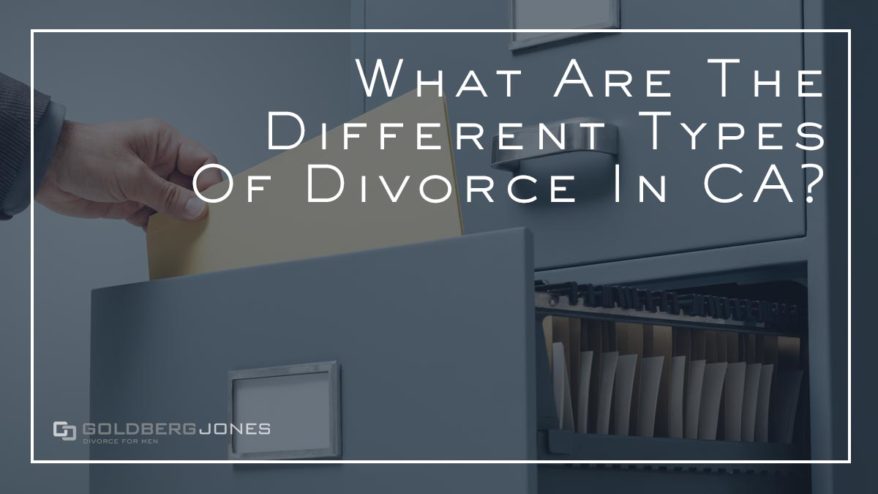Though it gets thrown around like it’s this big, all-encompassing term, there are actually multiple types of divorce in California.
Every case is different, thanks to the individuals involved and the specific situation. So not every approach is an ideal fit for every situation.
What Are The Different Types Of Divorce In CA?
It’s important to know the various types of divorce and what each means. There are differences and similarities. Some apply to multiple circumstances, while others have specific criteria and only fit certain cases. Being aware of this information helps streamline the process and gets you on the road to your new life faster and easier.
No-Fault Divorce
California is a no-fault divorce state. This essentially means that, as long as one spouse wants a divorce, the courts will grant it.
Before the 1970s, one spouse had to prove grounds against the other. Now there’s no reason to assign blame or show cause in these types of divorce.
All that’s required is for one spouse to cite irreconcilable differences, with no hope of resolution, and they’ll get their divorce.
Related Reading: Do I Need a Divorce Lawyer if My Spouse Has One?
Uncontested Divorce
Just like the name sounds, an uncontested divorce is when both parties agree on everything. This includes the division of property, child custody and child support, visitation, spousal support, finances, and the rest.
These types of divorce don’t go to trial, are generally quick and easy, and usually work best in the case of shorter, simpler marriages where the spouses are on the same page. It’s still a good idea to consult a divorce attorney just to make sure everything is fair and on the level, but it’s not a requirement.
Related Reading: How To Get Divorced In California
Contested Divorce
As you might imagine, a contested divorce is somewhat more adversarial. How much, however, depends on the level of conflict and disagreement between spouses.
This is the most complicated, contentious form, and is probably most like what comes to mind when you think of divorce. When spouses can’t agree on issues it often leads to mediation, arbitration, or even a full trial.
Disagreements range from minor quibbles to full-blown warfare. The more you disagree on the matters at hand, the longer and more complex, and more expensive, the process becomes.
Related Reading: High-Asset Divorce Mistakes
Summary Dissolution
California allows for summary dissolution. This is an uncontested no-fault divorce that applies to short, uncomplicated marriages. It’s often a quick and easy answer to divorce woes, but you do have to meet a number of conditions.
- The marriage must be shorter than five years.
- You don’t have children.
- A couple can’t own joint property—no lands, buildings, or real estate.
- Both must agree that neither will receive spousal support.
- There’s no more than $6000 in shared debt.
- Neither spouse has more than $40,000 in separate property.
- There is less than $40,000 worth of joint assets acquired during the marriage.
These last two exclude cars. If you check off all these boxes, summary dissolution may work in your case.
Related Reading: What Is Summary Dissolution?
Mediated Divorce
One common divorce strategy is mediation. In these types of divorce cases, the two sides work together with a third-party facilitator to hammer out any differences outside of court. The moderator helps the spouses work out conflicts and disagreements.
Mediation often settles child custody, handles the division of property, creates parenting plans, and determines maintenance support. This is a non-binding, voluntary process, and both parties must agree to the terms.
Related Reading: Mediation vs. Arbitration
Collaborative Divorce
The ultimate aim of collaborative divorce is to resolve disputes in a respectful, amicable manner. Both spouses, armed with lawyers trained in collaborative law, come together in a process aimed at reaching fair agreements that are mutually acceptable to both parties.
Collaborative divorce works best for couples willing and able to play nice and cooperate. It’s often less costly and combative than a traditional divorce, and the final say does not fall to a judge.
The parties sign a participation agreement, and the lawyers draft a formal agreement once everything is settled. If an agreement can’t be reached, you terminate the process and move forward with other means.
One point of note: collaborative attorneys can’t continue to represent you in the litigation process. If collaborative divorce fails, you’ll have to retain other counsel moving forward. It’s part of the deal.
Related Reading: How to Minimize Conflict in Divorce
Legal Separation
In California, legal separation offers an alternative to divorce. Divorce is final and absolute. On the other hand, legal separation is not so definitive. In practice, it often serves as a de facto divorce, though the marriage technically stays intact.
This strategy provides time to hash out the particulars of a divorce, including custody, financial matters, the division of property, and more. The couple can’t continue living together, though their marital status remains unchanged.
This strategy fits situations where a marriage is essentially over, but divorce isn’t the best option. This is often for religious reasons, to serve as a step towards eventual divorce, to work on reconciliation, or even for continuing health care in some cases.
Related Reading: Types Of Legal Separation
Knowing the types of divorce goes a long way toward helping you choose the appropriate strategy. Depending on the circumstances, it streamlined the process and helps get you to the end faster and more efficiently.
Related Reading: Types Of Child Custody In California

Comments 2
I am interested in speaking more about your services
Author
Hi Chuck, thanks for reaching out. Your contact information has been passed on to Zephyr Hill, our managing attorney, and he will reach out to you directly to talk about your case!